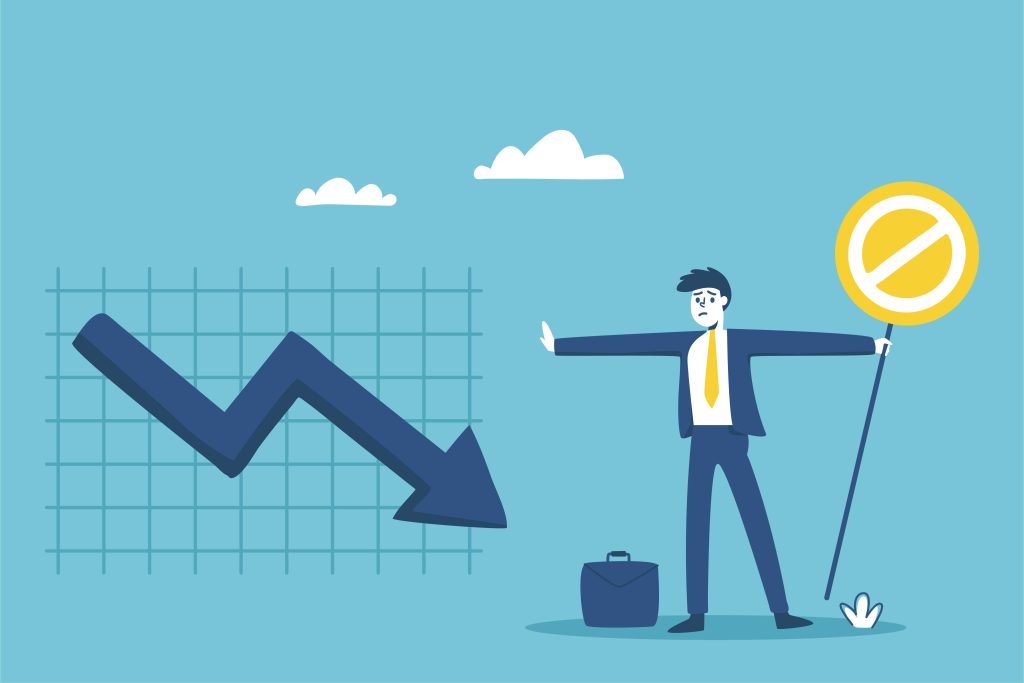It has happened to all of us that we have become involved in emotions and entered trades that, after hitting the stop-loss, we realize that entering that trade was not logical at all. Many traders have experienced this and made poor decisions at times, incurring significant financial losses.
Emotional decisions always lead us away from our strategy, a strategy that we have spent a lot of time finding and correcting. The only solution to avoid emotional decisions is to maintain discipline during trading. This not only is essential for personal success but also for long-term stability in financial markets. If you want to know how you can increase your profits from trades by maintaining discipline and how to become a disciplined trader who avoids overtrading, stay with us until the end of this article.
To avoid overtrading and stick to your strategy, you must first understand what happens that makes you dissatisfied with low trades. Many traders are influenced by emotions such as fear and greed. Fear of missing out (FOMO) can lead to impulsive decisions, causing traders to enter loss positions or exit them without adhering to their strategy. Conversely, greed can make traders hold losing positions in hopes of a market rebound, subsequently leading to excessive exposure to risk and increasing it.
Many traders are unaware of the consequences that overtrading has on their mental and emotional health, which is why they do not stop and consistently make poor decisions regarding their trades. Traders often overlook the impact that overtrading has on their mental and emotional health. A chaotic trade can lead to fatigue, burnout, and decision-making exhaustion, where a trader gradually becomes less capable of making accurate trading decisions over time. Therefore, maintaining a disciplined mindset is crucial.

Defining a Solid Trading Plan
The foundation of systematic trading begins with a comprehensive trading plan. It’s like wanting to build a building and needing to lay the foundation. If the foundation is not suitable, no matter how strong you make the columns, you still won’t be able to build a sturdy house. This foundation in trading is the planning of trades.
The plan should include trading goals, preferred markets, entry and exit strategies, risk management protocols, and execution criteria. To solidify your commitment, write down your plan and refer to it regularly. This means you should write it in your notebook and review it at the very beginning each day you plan to trade to recall everything you intend to do that day. Your trading plan should be realistic and based on your personal risk tolerance, trading style, and financial aspirations.
You shouldn’t think that, for example, you can make $5 profit from a $10 investment each day. No, this is a misguided mindset. You need to look at the issue realistically to manage your trades effectively. It doesn’t matter if you want to trade on the daily, weekly, or 15-minute charts; what matters is that you know which time frame allows you to implement your strategy, how to manage it, and how to exit with a reasonable profit.
Reading Suggestion: What is the three-drive pattern in price action?
Setting Clear Entry and Exit Criteria
Have criteria for evaluating your performance so you can assess how you’ve performed over a week. Keeping a trading journal is an excellent method for tracking trades, analyzing results, and identifying behavioral patterns. Was your performance good? Are you satisfied with this performance? Have you made progress compared to the previous week? These could be your questions to evaluate the trades you’ve made that week and to identify and resolve any issues. Review your journal periodically and debug it.
Clearly defined entry and exit criteria are often overlooked or taken lightly, which is why prices return before reaching their profit target, activating their stop-loss. Having clear entry and exit criteria based on technical analysis, fundamental analysis, or both is one of the fundamental parameters that every systematic trader follows. By defining these parameters in advance, you eliminate the arbitrary decision-making process that leads to overtrading.
Your entry criteria should be specific and based on trading signals that align with your strategy. For example, if you are a technical trader, you may look for specific chart patterns or indicators that show a desirable risk-reward ratio before entering a trade. Similarly, your exit criteria, whether based on a predetermined profit target or a stop-loss mechanism, should remove emotional elements from your decision-making process.
Moreover, if you want to control your work with greater assurance and completely distance yourself from overtrading, define a maximum number of trades that you can perform daily or weekly. Setting such a limit is very effective as it prevents you from opening more trades after reaching a certain number.
Risk management
Risk management in trading is always one of the challenges that many struggle with. However, it is one of the main ways to prevent overtrading. By defining the risk in each trade and adhering to a precise risk-reward ratio, traders can protect their capital and increase their longevity in the market. To achieve significant profits, you must first know how to preserve your capital. An accepted rule of thumb is not to risk more than 1 to 2 percent of your trading capital on each trade. This principle ensures that even with a series of losses, your total capital remains unaffected, allowing you to stay in the game and trade another day. Setting stop-loss and take-profit orders can strengthen this mindset by automating your exit strategy, minimizing emotional decision-making, and preventing you from chasing losses.
Continuous Education
The market is always changing, and if you try to fight change, you will be eliminated. Always remember this, and instead of battling change, try to adapt to it. To be able to adjust to market fluctuations, you must continuously update your knowledge, and the only way to do this is through ongoing education. You can learn from prominent instructors or find free resources from platforms like YouTube and other social media. Continuous education can keep your trading strategies fresh while enhancing your analytical skills.
Other ways to learn include reading books, subscribing to financial publications, participating in webinars, or joining trading communities. Interacting with other traders to discuss strategies and market insights can also provide valuable external perspectives to enhance your discipline and ultimately contribute to more informed decision-making.
Emotional Awareness
Cultivating emotional awareness in trading is essential. Emotional triggers can lead to overtrading, especially when a trader acts out of fear, greed, or even boredom. Being aware of these triggers allows you to develop strategies to deal with them. Knowing that you shouldn’t trade when your nerves are frayed due to an argument with your spouse or a friend can help prevent emotional decisions and preserve your initial capital.
Techniques such as mindfulness, meditation, or simply taking breaks can assist you in effectively managing your emotions. When emotions run high, it often makes sense to step back from trading and take a moment for clarity before making crucial decisions. Once again, review your trading journal and remind yourself that if you’re not feeling good at the moment, you might make a poor decision, so it’s better not to trade.
Additionally, recognizing and accepting that losses are a part of trading can help alleviate the pressure to quickly recoup losses through overtrading. Understanding that discomfort is a natural part of the trading journey can motivate you to remain disciplined and focused on your long-term goals rather than succumbing to the immediate emotional challenges. This mindset shift fosters resilience and improves your overall trading performance over time.
Conclusion
Avoiding overtrading and maintaining discipline is a multifaceted process that encompasses psychological control, strategic planning, risk management, continuous learning, and emotional awareness. By establishing a strong trading plan, implementing effective rules, and enhancing self-awareness, you can develop the necessary discipline to progress in financial markets. This way, even if you have a bad day, you’ll be able to return to the market the next day stronger than before.
Ultimately, trading is not just about finding the next big opportunity; it’s about creating a sustainable approach that withstands market fluctuations. It is an undeniable truth that cultivating discipline and avoiding overtrading can significantly increase your chances of achieving long-term financial success.
If you know someone who engages in excessive trading, be sure to share this article with them, and feel free to share your thoughts in the comments section!








